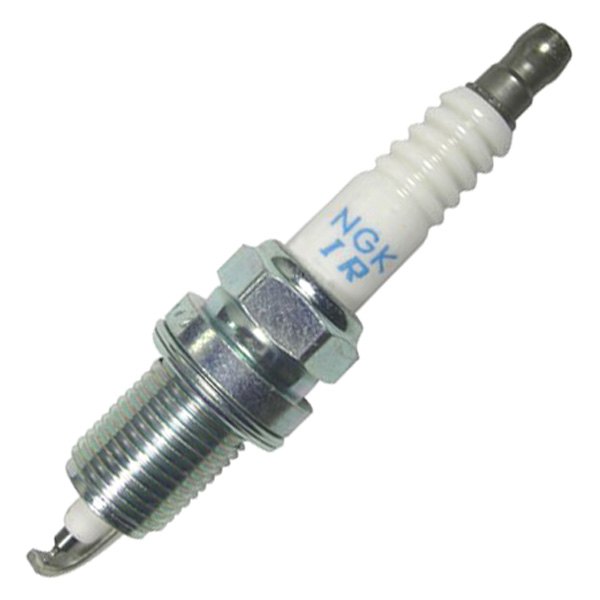f355spider
$50 Site Donor 2025
OP, are you obtaining your plugs from a reputable source? eBay and Amazon are notorious for cheap fakes from China. Make sure you are getting the real NGK product.
They're supposed to give more room for the spark because of taking up less space.
To answer all the questions. These were installed from the factory. The snowmobile is 13 years old, used very little before I bought it last year. So yes they are genuine NGK.
This is a snowmobile.... I ain't paying $60 for sparkplug. Its not a car, the kids ride it and we go on some rides to other towns. It's SLOW!!! The thing tops out at 55mph.
I interpreted the comment to mean less electrode to quench the flame kernal less/provide better expansion of the initial 'bang' if you will. Supposedly a benefit of fine wires. Excellent point on waste sparks.WHAT?
Just a note. Don't use them in a waste spark ignition. On a "V" engine, one side won't last more than six months.
So true. With my Briggs and Stratton 5500W conventional generator I finally replaced the factory Champion plug, a standard nickle end plug, with a NGK Iridium plug. With only changing the factory Champion plug I went from taking ~7-9 pulls with the recoil to starting it on 2 pulls with the NGK Iridium plug. This generator has a 342cc engine attached to a large generator head, a lot to turn with a recoil starter. The factory plug looks perfect, almost new, but the iridium plug is a huge improvement with starting.Fine wire plugs be it Iridium, platinum, Ruthenium all require less firing voltage meaning less stress on the coil, longer life, easier starting, less fouling. Prove it to yourself, put one in any OPE engine that uses a pull start and magneto and see how easy it is to start and how long it last.
The advantage of precious metal tipped plugs over regular plugs is longevity because the tips preclude erosion. Both will give a spark. Regular plugs will have more erosion, but precious metal tipped plugs can have the tips blown off with extended use.
I believe all plugs are copper core.

What? Who said anything about E10? Octane booster? This is a T660 long, wide track. A snowmobile known for being slow....If it's got coil on plug (3 coils- no hi tension leads) you have to run the IR type.
Get a new set, but it sounds like you do have a fueling problem. E10 gasoline and all that sitting, surprised it runs at all. You say it's slow, Must not be running right. That is safer for the kids I suppose, but the engine is being hurt.
I hope you didn't put in an octane booster with MMT - that will kill plugs fast.
No, quenching is not a problem.I interpreted the comment to mean less electrode to quench the flame kernal less/provide better expansion of the initial 'bang' if you will. Supposedly a benefit of fine wires. Excellent point on waste sparks.
Yes, understood the main benefit of fine wires is the small and sharp contact area, but there are schools of thought on small electrodes allowing less obstructed flame growth. Quick pull from the web, AAP & NAPA, but is it true????No, quenching is not a problem.
If you want electricity to "jump" from one electrode to another, you want at least one contact to be as small as possible. And, if possible, ground to a point. That's why lightning directors on old farm houses, barns, antenna towers and tall building are ground to a point at the tip.
Kinda sorta.Yes, understood the main benefit of fine wires is the small and sharp contact area, but there are schools of thought on small electrodes allowing less obstructed flame growth. Quick pull from the web, AAP & NAPA, but is it true????
"As the spark ignites the air/fuel mixture, the colder side electrode tends to “quench” the flame. To combat quenching, some spark plug manufacturers cut a “U” or “V” shaped channel into the “spark receiving” surface of the side electrode. The larger channeled area reduces,,"
".. newer precious metal spark plugs have a center electrode diameter of less than 1.0mm. This smaller diameter center electrode provides more area for flame kernel expansion, further reducing the quenching effect."
Not that I'm a plug nerd or engineer, but back in the dark ages when I was thinking of investing in fine wires for an airplane I was flying, I did get an earful or two on benefits from one of the local hangar rats who actually had some expertise....
Didn't Denso do a U groove ground electrode back in the day??? Although, IIRC someone, and it may have been the Engineer hangar rat mentioned above, said that the U shaped metal stock solved some manufacturing problem and the marketing folks ran with it. If so, kudos to Marketing!Kinda sorta.
The center electrode has little to no effect on spark propagation. The side electrode does. The side electrode presents a wall the spark has to navigate around. This is why spark plug indexing and electrode less spark plugs were popular in the racing world. Racers would also file the top of the side electrode into a "v" to make the spark contact area smaller.
I have not seen a "u" or "v" cut into the side electrode but have seen it done on the center electrode. This is a gimmick from manufacturers to give the center electrode two possible exit paths, ensuring you always have a good electrical path. Really? To me it reduces the wear area of the center electrode. Trust me, the electrical discharge is going to make contact on the least resistive part of the electrodes.
I don’t think you were meaning to say what you’re sayingI'm tempted to just run cheap copper plugs and change them annually. The NGKs are almost $20 each my FLAPS.
Any opinions?
